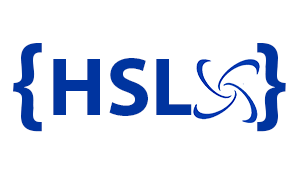The best way to manage global data within Episerver
High Score Labs News • Jan 12, 2021
This article discusses some of the commonly used methods of managing your website’s global settings while working with Episerver. The list is arranged in order, from our least favorite to our go-to methods.
- App Settings
This route takes the least favourite spot because it’s very cumbersome and quite prone to error. It involves storing the page IDs of your key pages in your app settings. This, however, takes away your freedom to modify pages at will. Attempt to delete or recreate a page and you’ll find your app settings in disarray.
- A Settings Block
The settings block is a nice route to global data management. Except it’s quite clumsy to use on smaller websites as you need to manage many small areas. The way it works, you create one or more settings blocks instead of whole pages. One upside of this approach is that you still have all your Episerver content benefits such as version history and language management. That being said, we still prefer other methods.
- A Settings Assembly
Pre-Continuous-Integration, this was a rather simple approach; you could manually copy files onto a server and life went on. The rise of CI, however, has rendered this a rigid and route to take. Here’s why.
With settings assembly, you can create a separate assembly containing static consts that simply store settings. This secures your settings better as only developers can modify or update anything. Doesn’t sound so bad yet, right? Here’s the big deal: each time you change any setting or add a new one, you’d need to develop a full release package.
- Admin Page
This approach is the one to use if you’re big on settings security and restricted access. You would create an admin page to store your settings, effectively locking them out of reach of content editors and other roles on your website.
However, if your site is multi-lingual, best to stay away from this route. On the admin page, you’re without paging version history and language management. Thus, applying different settings on your multi-lingual site will be difficult, or impossible at times.
- Start Page
A commonly used option, the Start Page makes your site settings quite accessible. Simply create a tab on your homepage, name it ‘Settings’ (of course!), and deposit all your settings in there. This makes it very easy to access your site settings, and modify as needed.
There are a few downsides to this approach, however. First, if the contents of this tab are voluminous, using the Start Page on a high load site may take longer and add more unnecessary bandwidth to your server.
- A Setting Page Type
Now, here’s our favorite. This approach involves creating a SettingsPageType and defining everything you need in it. This effectively cuts back on the amount of unnecessary data that your homepage. Also, you can restrict access of content editors and others who manage the site. What’s more? You have all your EPIserver privileges including version history and language management.
Et voila! Those are the most popular methods of effectively managing your website’s global data in Episerver. Use this knowledge to guide your choice as you consider which will be best for your website and its features.
Contact us today!






